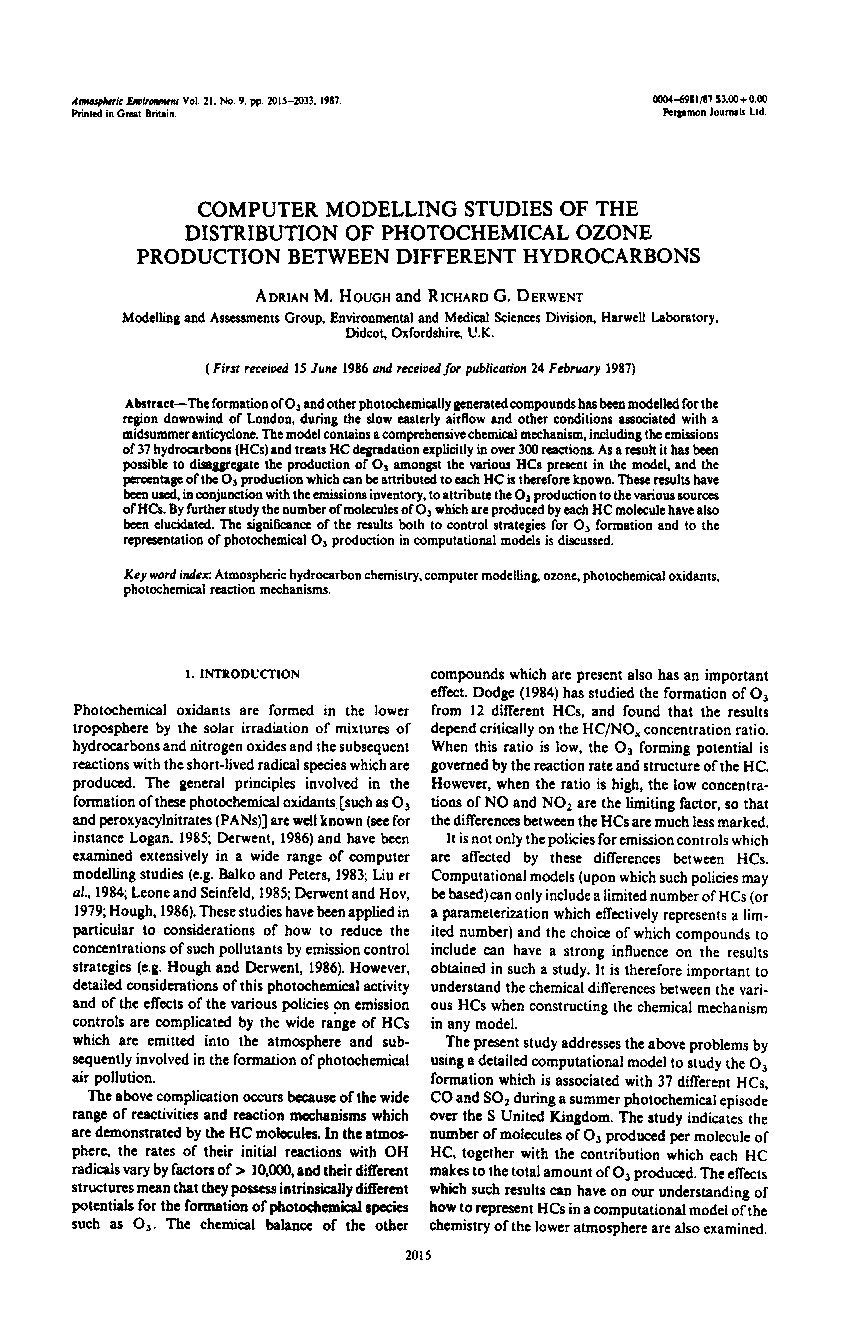| Article ID | Journal | Published Year | Pages | File Type |
|---|---|---|---|---|
| 4474669 | Atmospheric Environment (1967) | 2015 | 19 Pages |
Abstract
The formation of O3 and other photochemically generated compounds has been modelled for the region downwind of London, during the slow easterly airflow and other conditions associated with a midsummer anticyclone. The model contains a comprehensive chemical mechanism, including the emissions of 37 hydrocarbons (HCs) and treats HC degradation explicitly in over 300 reactions. As a result it has been possible to disaggregate the production of O3 amongst the various HCs present in the model, and the percentage of the O3 production which can be attributed to each HC is therefore known. These results have been used, in conjunction with the emissions inventory, to attribute the O3 production to the various sources of HCs. By further study the number of molecules of O3 which are produced by each HC molecule have also been elucidated. The significance of the results both to control strategies for O3 formation and to the representation of photochemical O3 production in computational models is discussed.
Related Topics
Physical Sciences and Engineering
Earth and Planetary Sciences
Atmospheric Science
Authors
Adrian M. Hough, Richard G. Derwent,
